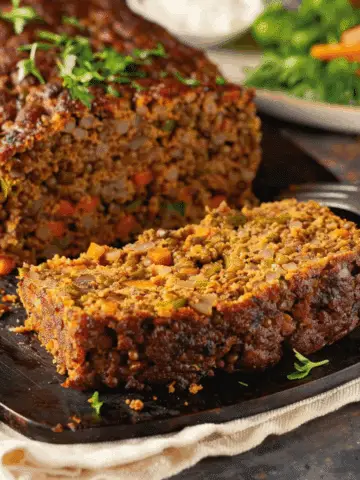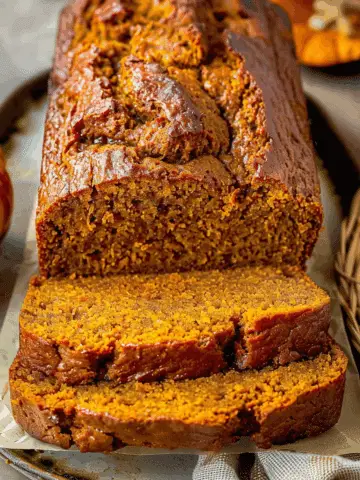These homemade Greek yogurt bagels combine simplicity with nutrition, creating a chewy, flavorful bread with significantly more protein than traditional bagels. Made with just a handful of pantry staples, these no-yeast bagels bake up beautifully golden on the outside while remaining soft and dense on the inside—perfect for breakfast sandwiches or a hearty snack.

Why You'll Love This Recipe
These Greek yogurt bagels are a game-changer for several reasons. First, they require no yeast, which means no waiting for dough to rise. Second, they deliver a protein boost thanks to the Greek yogurt, making them more nutritionally balanced than regular bagels. Third, with just five simple ingredients, they're incredibly easy to make, even for baking beginners. The dough comes together quickly, and the bagels bake in just 20-25 minutes. Additionally, they're endlessly customizable with various toppings and mix-ins to suit your taste preferences.
Ingredients
(Tip: You'll find the full list of ingredients and measurements in the recipe card below.)
Self-rising flour provides both the structure and the rise for these bagels without needing yeast. It's simply all-purpose flour with baking powder and salt already mixed in, making this recipe more streamlined. If you don't have self-rising flour on hand, you can easily make your own by adding 1½ teaspoons of baking powder and ¼ teaspoon of salt to each cup of all-purpose flour.
Greek yogurt is the star ingredient that gives these bagels their protein punch and contributes to their wonderfully chewy texture. Make sure to use thick, strained Greek yogurt (not regular yogurt) for best results, as the lower moisture content is crucial for achieving the right dough consistency. Fat-free, low-fat, or full-fat Greek yogurt all work well in this recipe.
Egg provides structure and helps create that characteristic shiny bagel exterior when brushed on top before baking. It also helps the toppings stick to the surface of the bagel.
Salt enhances the flavor of the bagels and balances the tanginess from the Greek yogurt. Even though self-rising flour contains some salt, the additional amount helps develop that classic bagel taste.
Toppings are optional but highly recommended to add flavor and texture to your bagels. Everything bagel seasoning, sesame seeds, poppy seeds, dried garlic, or coarse sea salt all make excellent topping choices.
Directions
- Preheat your oven to 375°F (190°C) and line a baking sheet with parchment paper.
- In a large bowl, combine the self-rising flour and salt, mixing well.
- Add the Greek yogurt to the flour mixture and stir until the ingredients begin to form a dough.
- Turn the dough out onto a lightly floured surface and knead for about 2 minutes until smooth. If the dough is too sticky, add a little more flour; if too dry, add a teaspoon of water.
- Divide the dough into 4 equal pieces. Roll each piece into a ball, then use your finger to poke a hole in the center. Gently stretch the hole to about 1½ inches in diameter, forming a bagel shape.
- Place the shaped bagels on the prepared baking sheet.
- Beat the egg in a small bowl and brush the tops of the bagels with the egg wash.
- If using, sprinkle your chosen toppings over the bagels.
- Bake for 20-25 minutes until the bagels are golden brown.
- Allow the bagels to cool on a wire rack for at least 10 minutes before slicing and serving.
Servings and Timing
This recipe yields 4 medium-sized bagels. Preparation takes about 15 minutes, and baking time is 20-25 minutes, for a total time of approximately 40 minutes from start to finish. Each bagel contains roughly 7-8 grams of protein (depending on the specific Greek yogurt used), making them a more protein-rich option compared to traditional bagels. Each serving (one bagel) is approximately 150-175 calories.
Variations
Flavor-Infused Dough: Mix herbs like rosemary, thyme, or dill directly into the dough for savory variations. For sweeter options, add cinnamon and a tablespoon of honey or maple syrup.
Cheese Bagels: Fold in ¼ cup of shredded cheddar, mozzarella, or parmesan cheese into the dough before shaping.
Whole Wheat Option: Replace half of the self-rising flour with whole wheat flour for added fiber and a nuttier taste.
Gluten-Free Version: Use a gluten-free self-rising flour blend in place of regular self-rising flour. Note that the texture may be slightly different.
Blueberry Bagels: Gently fold ¼ cup dried or fresh blueberries into the dough for a breakfast classic.
Onion Bagels: Mix 2 tablespoons of dried minced onion into the dough and sprinkle some on top before baking.
Storage/Reheating
These Greek yogurt bagels stay fresh at room temperature in an airtight container for 1-2 days. For longer storage, refrigerate them for up to 5 days or freeze for up to 3 months. To freeze, wrap each cooled bagel individually in plastic wrap, then place them in a freezer-safe bag.
For reheating, toast refrigerated bagels directly in a toaster or toaster oven. For frozen bagels, thaw at room temperature for about an hour, or microwave for 20-30 seconds on the defrost setting before toasting. You can also reheat them in an oven preheated to 350°F (175°C) for about 5-7 minutes.
For the best texture after storage, slice the bagels before freezing so they can go directly into the toaster when needed.
FAQs
Why is my bagel dough too sticky?
If your dough is too sticky to work with, the most common culprit is excess moisture in your Greek yogurt. Different brands of Greek yogurt have varying levels of moisture. Simply add additional self-rising flour, one tablespoon at a time, until the dough reaches a workable consistency that doesn't stick to your hands excessively.
Can I use regular yogurt instead of Greek yogurt?
Regular yogurt contains significantly more moisture than Greek yogurt, which would make the dough too wet. If regular yogurt is your only option, strain it through a cheesecloth or coffee filter for several hours to remove excess liquid before using in this recipe.
Why didn't my bagels rise properly?
Check that your self-rising flour is fresh, as the leavening agents can lose potency over time. If using homemade self-rising flour, ensure you've added enough baking powder (1½ teaspoons per cup of flour). Also, overworking the dough can inhibit proper rising, so knead just until smooth.
Can I make these bagels dairy-free?
Yes, you can substitute the Greek yogurt with a thick, unsweetened dairy-free yogurt alternative. Coconut yogurt or almond milk yogurt that has been strained works well. Make sure it's similar in consistency to Greek yogurt for best results.
How can I get my toppings to stick better to the bagels?
For maximum topping adhesion, make sure to brush the bagels generously with egg wash. Apply the toppings immediately after the egg wash while it's still wet. Pressing the toppings gently into the surface can also help them adhere better during baking.
Are these bagels considered healthy?
These Greek yogurt bagels are higher in protein and lower in calories than traditional bagels. However, "healthy" depends on your specific dietary needs and goals. They contain refined flour but offer good protein content from the Greek yogurt, making them a more balanced option than typical bagels.
My bagels turned out dense and heavy. What went wrong?
Overmixing or overworking the dough can develop too much gluten, resulting in dense bagels. Mix just until the ingredients are combined and knead only until smooth. Also, check that your oven was properly preheated to ensure adequate rising during baking.
Can I double this recipe?
Yes, this recipe doubles well. Simply multiply all ingredients by two and follow the same instructions. You may need to bake in batches or use multiple baking sheets to ensure proper air circulation around each bagel.
How do I achieve that shiny bagel exterior?
The egg wash is key to achieving the characteristic shiny exterior on bagels. Make sure to brush the tops thoroughly with beaten egg just before baking. For extra shine, you can use just the egg white or add a teaspoon of water to the whole beaten egg.
Can I boil these bagels like traditional bagels?
While traditional yeast bagels are boiled before baking to create their chewy exterior, these Greek yogurt bagels don't require boiling. The dough doesn't have the same structure as yeast-based doughs and may fall apart in boiling water. The egg wash helps create a desirable exterior without the boiling step.
Conclusion
These Greek yogurt bagels represent the perfect balance of convenience, nutrition, and delicious taste. With their higher protein content and simple preparation, they've become a favorite for busy weekday breakfasts and weekend brunch alike. The versatility of this recipe invites experimentation with different flavors and toppings, ensuring you'll never tire of these homemade treats.
Perhaps the greatest advantage of this recipe is its accessibility—even those who consider themselves baking novices can successfully create authentic-tasting bagels at home without special equipment or techniques. Whether you enjoy them with cream cheese, as sandwich bread, or simply toasted with butter, these Greek yogurt bagels prove that nutritious baking doesn't have to be complicated or time-consuming.

Greek Yogurt Bagels
- Total Time: 35 minutes
- Yield: 4 bagels
- Diet: Vegetarian
Description
Discover how to make Greek Yogurt Bagels – a protein-packed twist on the classic bagel. Perfect for a quick and healthy breakfast or snack, this recipe combines simplicity, flavor, and nutrition. Made with minimal ingredients and packed with protein, these easy-to-make bagels are ideal for family meals and specialty diets!
Ingredients
Ingredients:
1 cup Greek yogurt (plain, non-fat or full-fat)
1 cup self-rising flour (or all-purpose flour + 1½ tsp baking powder + ¼ tsp salt)
1 egg (for egg wash, optional)
Toppings: sesame seeds, poppy seeds, everything but the bagel seasoning, or plain
Instructions
Instructions:
- Preheat your oven to 375°F (190°C). Line a baking sheet with parchment paper or a silicone baking mat.
- In a mixing bowl, combine Greek yogurt and self-rising flour until a dough forms. If sticky, work in extra flour gradually.
- Transfer the dough to a floured surface and knead it gently for 1-2 minutes until smooth.
- Divide the dough into 4 equal portions. Roll each portion into a log and connect the ends to form bagels.
- Place the bagels on the prepared baking sheet. Brush the top with beaten egg if desired, then sprinkle toppings of choice.
- Bake in the preheated oven for 20-25 minutes, or until the bagels are golden brown.
- Let them cool slightly before serving. Enjoy!
Notes
- To make this recipe gluten-free, use a gluten-free self-rising flour mix.
- For added flavor and texture, consider adding dried herbs or grated cheese into the dough.
- Store leftover bagels in an airtight container and reheat in the toaster for best results.
- Prep Time: 10 minutes
- Cook Time: 25 minutes
- Category: Bread
- Method: Baking
- Cuisine: Mediterranean





